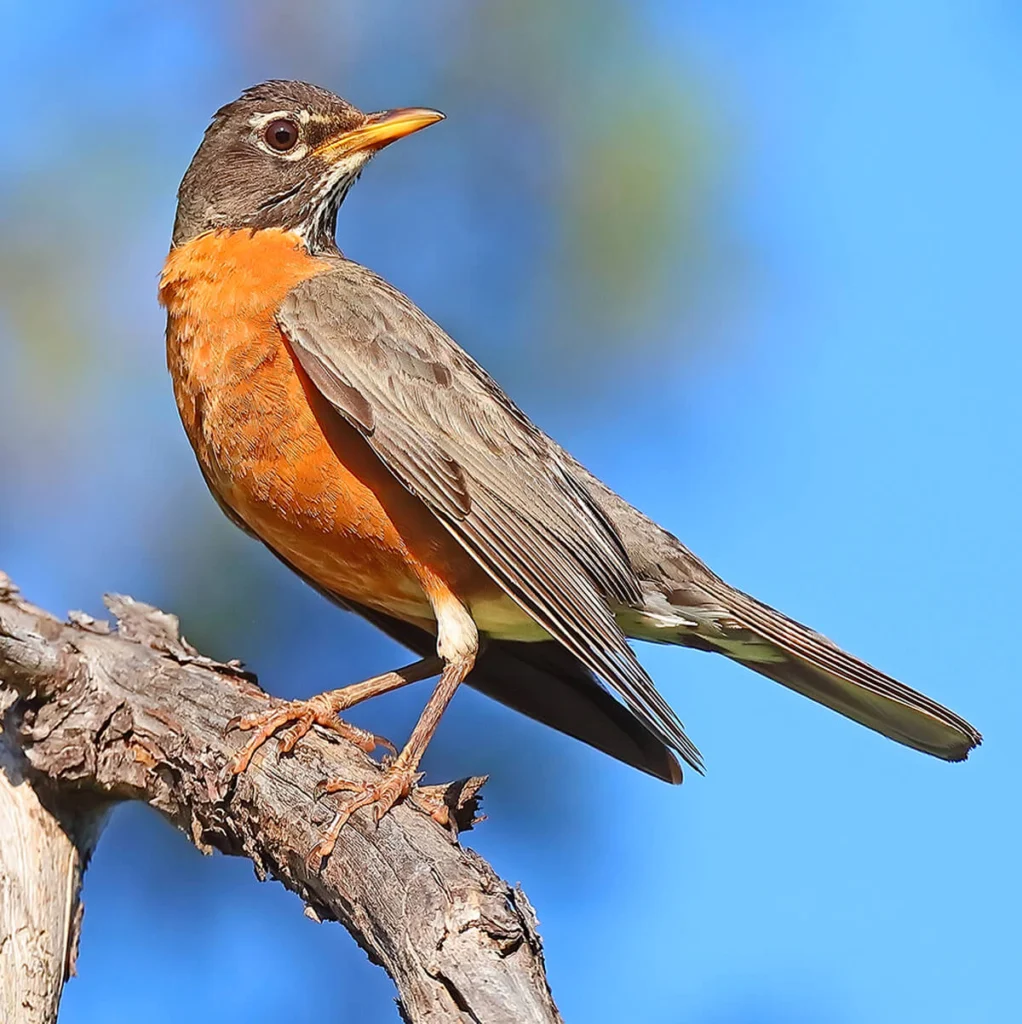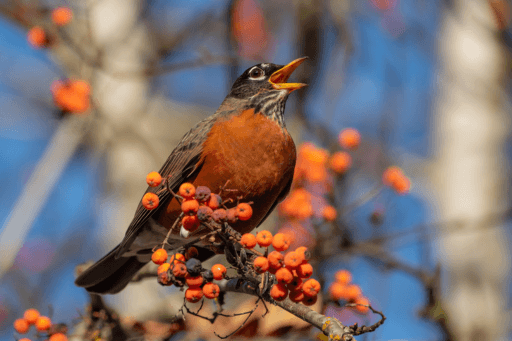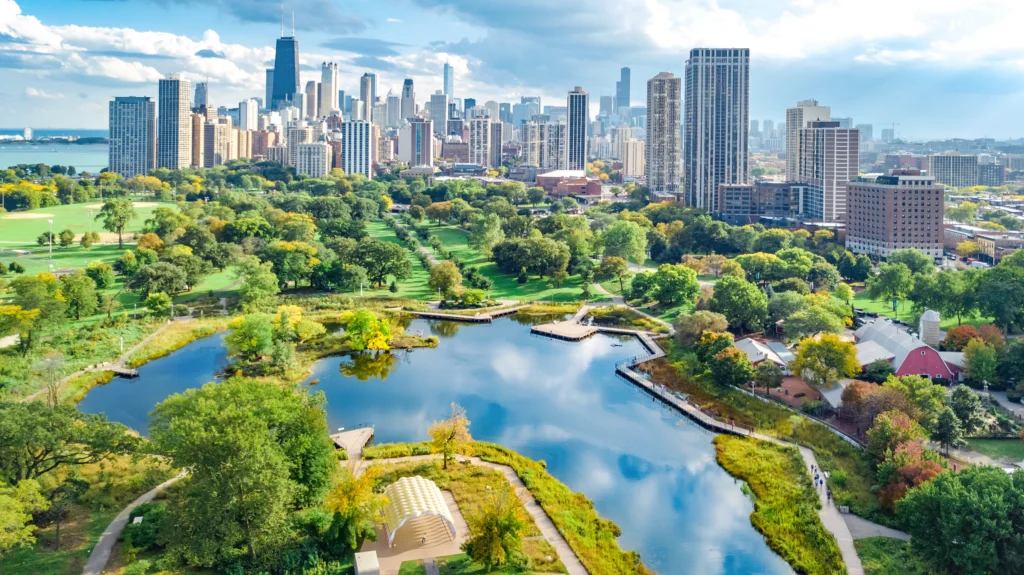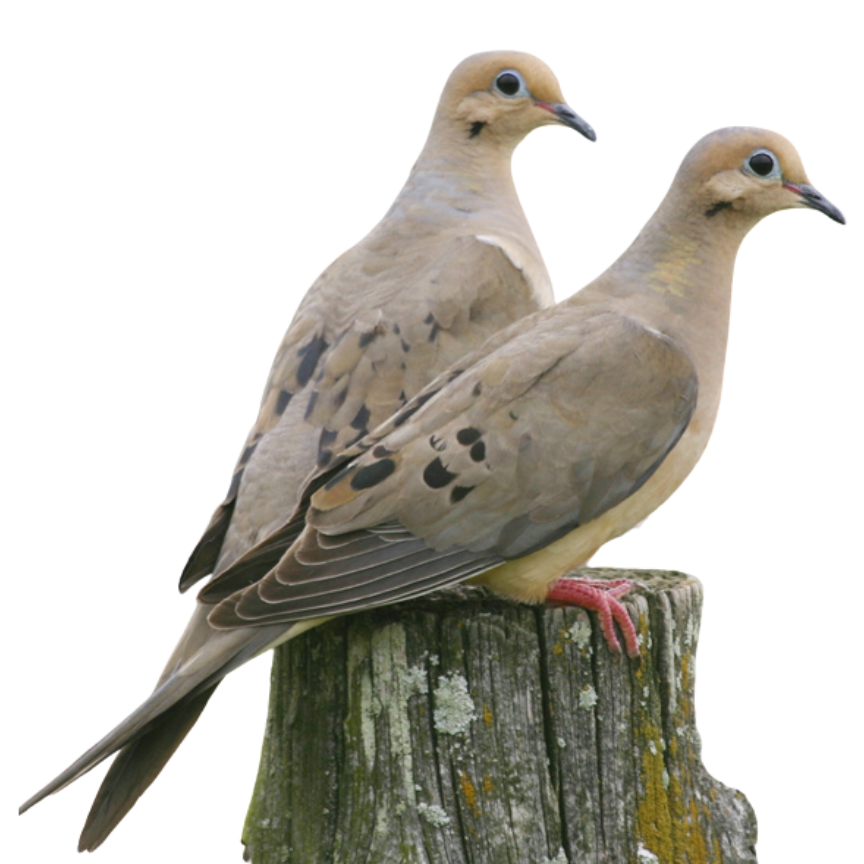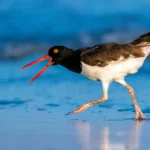
Overview
About
The American Robin is one of North America’s most widespread, familiar, and well-loved songbirds. Although homesick settlers named it after the European Robin because of its reddish-orange breast, the two species are not closely related. The American Robin is a thrush, related to the Wood Thrush, Swainson’s Thrush, and Hermit Thrush, while the European Robin is a flycatcher.
Despite being a classic sign of spring, not all American Robin populations migrate, and some may actually stay near their breeding grounds year-round. However, this large, stately-looking thrush is a welcome sight in any season.
Threats
Birds around the world are declining, and many of them are facing urgent, acute threats. But all birds, from the rarest species to familiar backyard birds like the American Robin, are made more vulnerable by the cumulative impacts of threats like habitat loss and invasive species.
Pesticides & Toxins
Pesticide poisoning is a major threat because American Robins forage on lawns and other open spaces that are often sprayed with toxins. Although DDT has been banned in the United States, other toxic chemicals such as neonicotinoids, chlorpyrifos, and glyphosate (used in the familiar weed killer Round-Up) are still in use. Pesticides can also affect populations of earthworms, a major food source for this bird.
Cat & Invasive Species
Because American Robins forage and feed on the ground and often nest near homes where pets are present, they are especially vulnerable to predation by feral and outdoor cats.
Glass Collisions
American Robins often collide with glass windows, especially when flocks gather to feed in vegetation near buildings. In addition, they frequently hit vehicles when flying across roads.
Conservation Strategies & Projects
Birds need our help to overcome the threats they face. Many of ABC’s policy programs work to reduce the impacts of these hazards. We also offer tips on improving your backyard habitat to make it more welcoming year-round to the American Robin and other birds.
Avoid Pesticides & Toxins
ABC’s Birds and Pesticides campaign advocates for policies and regulations that restrict dangerous pesticides and toxic chemicals frequently used in homes and gardens, and in agriculture. We insist that regulatory decisions be grounded in cutting-edge science and robust monitoring.
Keeping Cats Indoors
ABC’s Cats Indoors program offers solutions for making backyards safer for the American Robin and other familiar and well-loved species. We encourage responsible pet ownership and keeping cats indoors or under the control of their owner when they explore outside. We pursue policy solutions that curb the persistent, severe threats free-roaming cats can pose to habitats, wildlife, and human health.
Avoid Glass Collisions
ABC’s Collisions program offers solutions for making windows safer for birds. We test and evaluate the effectiveness of window collision deterrent methods and help people find the right solutions for their windows, whether they’re looking to prevent collisions at home, school, or work.
Bird Gallery
The American Robin is the largest North American thrush species, averaging about 10 inches long. Adult males have dark gray-brown upperparts with blackish heads and white throats streaked with black, contrasting with deep rusty-orange undersides and flanks. Adult females are generally lighter and paler overall. All adults have white crescents above and below the eye and darker tails with conspicuous white corners that are especially visible in flight. Juveniles have heavy dark spotting on the breast and sides, revealing their thrushy origins.
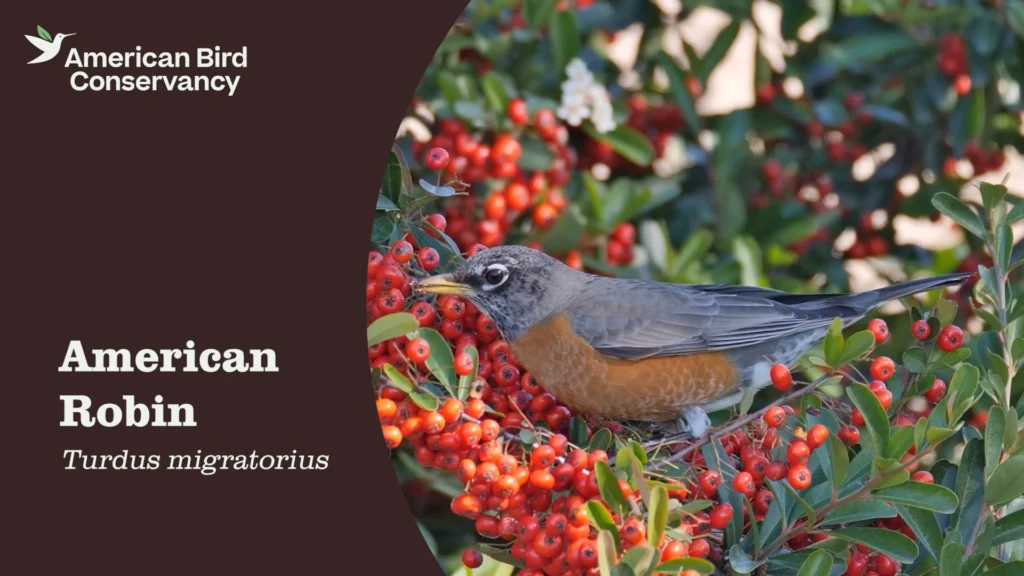
Bird Sounds
In late winter, male American Robins begin to sing their cheerful, caroling song (cheerily cheer-up cheerio…). Birders often use this song as a reference when learning other bird songs. For instance, the Scarlet Tanager’s song is often described as “a robin in a hurry, with a sore throat,” while the Rose-breasted Grosbeak’s song is compared to a sweeter, smoother version of the robin’s — “a robin that’s taken voice lessons.” The American Robin also has a variety of distinctive calls, including a shrill cheep alarm call and a low tuktuktuk when disturbed.
Compare the song of the American Robin to some of these sound-alike species below!
Jeff Dyck, XC418153. Accessible at www.xeno-canto.org/418153.
Antonio Xeira, XC383961. Accessible at www.xeno-canto.org/383961.
Daniel Lane, XC101898. Accessible at www.xeno-canto.org/101898.
Todd Wilson, XC43406. Accessible at www.xeno-canto.org/43406.
Habitat
Although originally a bird of forest clearings, the American Robin has adapted particularly well to widespread settlement and clearing of forest and grasslands.
- Breeds in open and early-successional forests, parks, and residential areas
- Breeds in riparian corridors
- Found in forests and lowland areas in the nonbreeding season

Range & Region
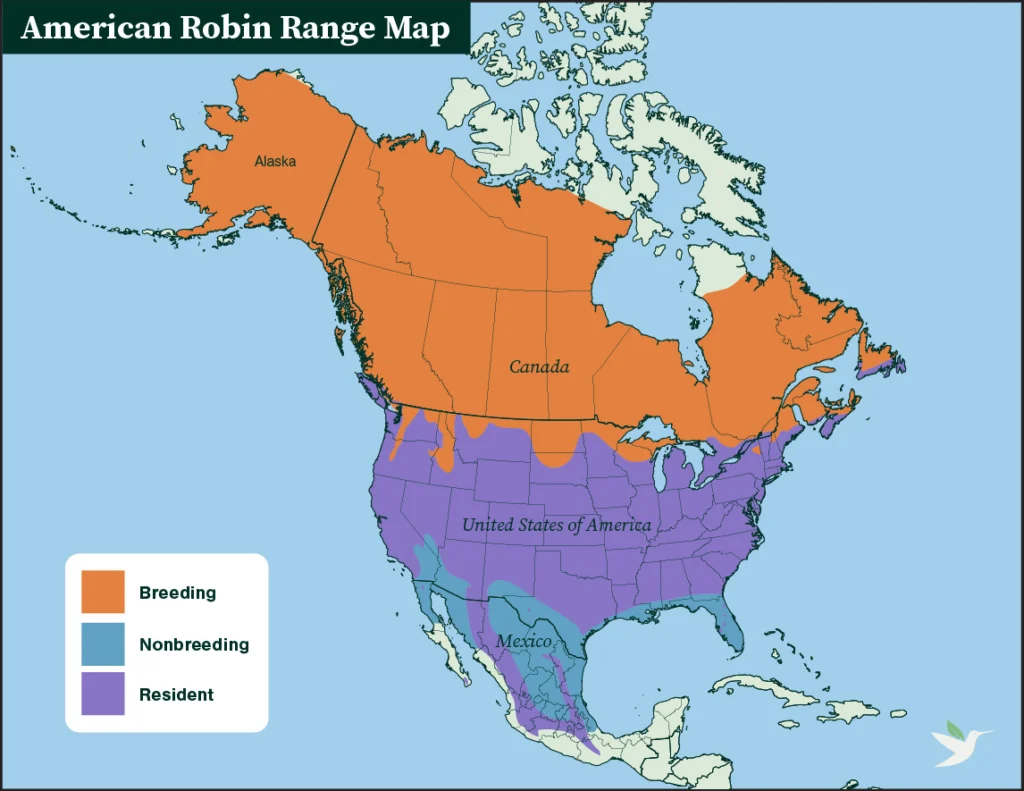
Specific Area
North America
Range Detail
The American Robin has a very large breeding range, encompassing a wide variety of open woods and edge habitats from northern Alaska, across Canada, down through the lower 48 United States, and into mountainous areas of Mexico. It is very scarce in winter in Cuba and The Bahamas and has occurred as a rare vagrant to other parts of the West Indies, as well as Europe. Migratory populations spend the nonbreeding season from extreme southern Canada south to central Mexico.
Did you know?
Northern populations of American Robin are short- to medium-distance migrants, while two nonmigratory subspecies are resident in Mexico. Migrating and nonbreeding American Robins gather in large roosting and feeding flocks that can number in the thousands.
Life History
Although not a sure sign of spring, the American Robin is certainly an “early bird,” beginning to breed in early April. If conditions are ideal, a robin pair will raise two or three broods per season. The American Robin easily recognizes the eggs of Brown-headed Cowbird, a species that lays its eggs in the nests of other birds, and will puncture the eggs, then throw them out of the nest.

Diet
Most people are familiar with the sight of American Robins hopping busily to and fro on lawns and in other open spaces, pulling up earthworms. Although they mainly glean food from the ground, robins also perch in trees while feeding on fruit and can catch flying insects in midair.
The American Robin has a varied diet, feeding on earthworms, snails, spiders, and insects during the spring and summer, then switching to a primarily fruit diet for the fall and winter. They are important seed dispersers, spreading introduced plants such as bush honeysuckle and English holly as well as native plants over wide areas.
Courtship
The American Robin is socially monogamous, meaning that pairs stay together for at least the duration of a breeding season, if not longer. A male robin courts potential partners through song and display, strutting around a chosen female with spread wings, raised tail, and inflated throat. Pairs also engage in “ceremonial gaping,” where a male and female touch widely opened bills together. A male may also feed his mate during courtship to strengthen their bond.
Nesting
The female chooses the nest site and builds the bulky, cup-shaped nest. American Robin nests usually have a tell-tale outer wall of mud over a grassy exterior layer and an interior lined with softer vegetation. Nests are most often built 5 to 15 feet off the ground on a tree fork, in a dense shrub, or on a window ledge or other sheltered structure.
Eggs & Young
The female American Robin typically lays a clutch of three to four sky-blue eggs, which she incubates herself for about two weeks. The naked, helpless hatchlings are fed by both parents and grow quickly, leaving the nest after roughly two weeks. The fledgling robins cannot fly well at first and stay concealed in thick cover, where they are fed and tended by their parents. They usually reach total independence after a month, but may remain on the breeding grounds for up to four months.







